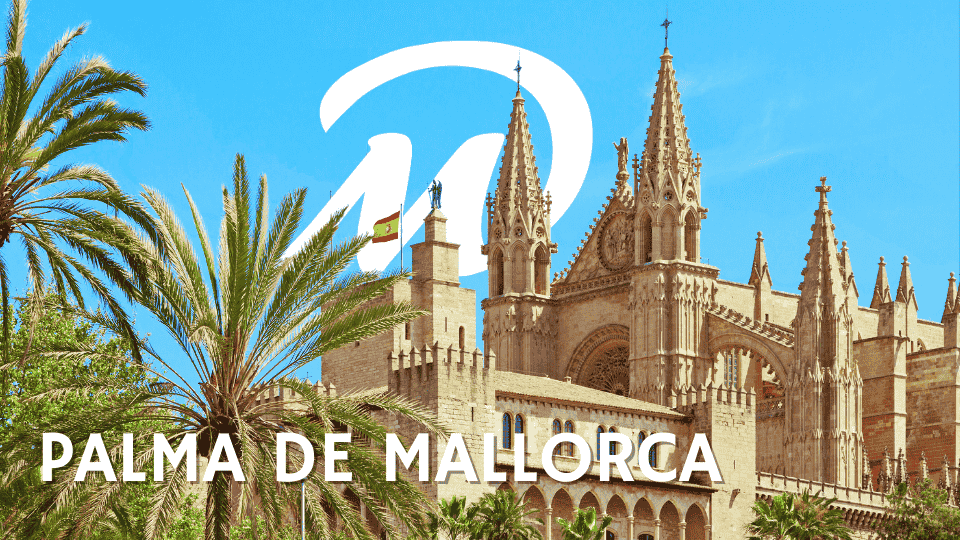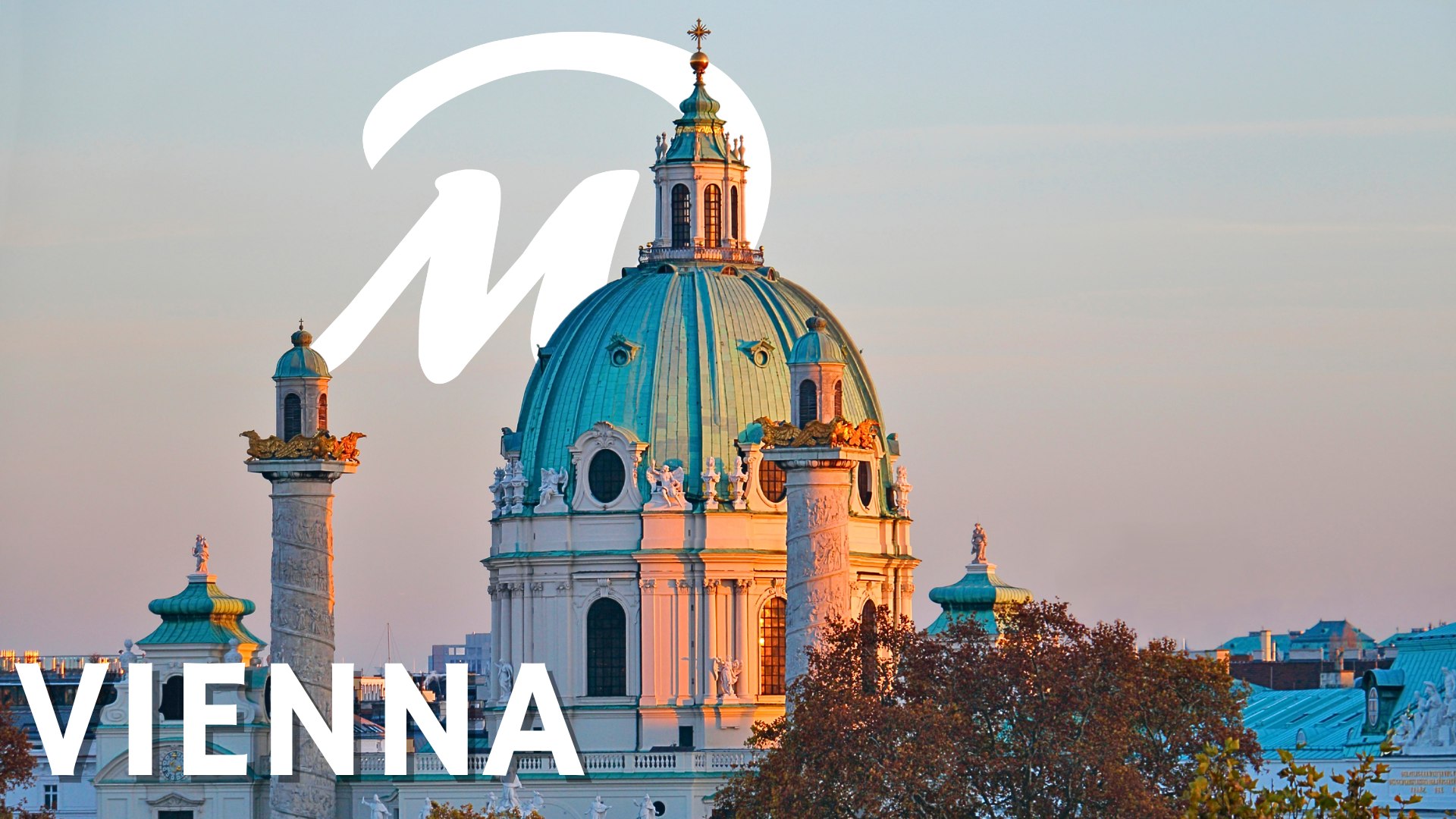🎉 You’re in luck! We’re giving away the Madrid tour to the first 100 users who use the code MADRIDFREE in the app.
⏰ Hurry up before they’re gone!
Madrid has been the capital of Spain since 1561 and is a hub for millions of tourists who come to see Spain’s rich heritage.
Its origins are curious, the city was originally called Mayrit, “abundance of rivers of water”. This small metropolis was founded by Emir Muhammed I in 865 with the construction of a citadel near the Manzanares River. Later conquered by Alfonso VI of Castile in 1083, it went from being an Islamic city to being part of the Christian kingdom, retaining few traces of its Muslim past.
Today Madrid stands as a vibrant cosmopolitan city, full of museums, art and monuments waiting to be discovered!
Do you want to know the best things to do in Madrid without missing anything? We recommend these top things to do in Madrid.
⌛Do you want to keep searching through blogs, or would you rather have your Madrid guide ready?
The DareMapp app makes it easy. Enjoy the COMPLETE GUIDE ON YOUR PHONE and experience every corner in a unique way. No schedules, at your own pace.
Things to do in Madrid: 8 must-see places
1. Plaza Mayor: The heart of Madrid
Originally known as Plaza del Arrabal, it has had up to 7 different names.
At 129 metres long and 94 metres wide, visiting the Plaza Mayor is among the top things to do in Madrid.
Here you can find historic buildings and monuments such as; the Casa de la Panadería, home to the tourist centre and municipal offices; the Casa de la Carnicería, a boutique hotel and event space; the Arco de Cuchilleros, the access to the square and shopping area; and the Statue of Felipe III, a historic monument and meeting point for many Madrilenians.
Today, Plaza Mayor is a bustling meeting point where tourists and locals enjoy terraces, the traditional calamari sandwich at Bar La Campana and, at Christmas, a charming Christmas market!
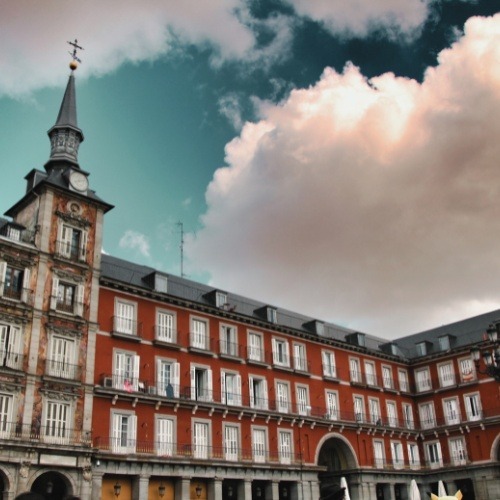
2. Puerta del Sol: The old entrance
Although it is called Puerta del Sol, it is actually a square.
Built in the 15th century, it was one of the access points of the old wall that surrounded the city. And that is where its name comes from: it was a gateway that received the first rays of the sun at dawn. It was Charles I of Spain and V of Germany who gave it its current name because of this characteristic.
If you want to know what things to do in Madrid, here you will find many tourist attractions such as the famous statue of the Bear and the Strawberry Tree, the Kilometre Zero plaque, the Real Casa de Correos (Royal Post Office), and the Mariblanca.

⤵️ Definitely , you want to have your trip already organized. Want to discover how?
With DareMapp, forget about wasting time. Enjoy Madrid at your own pace, with no schedules, using our complete self-guided tour.
3. Palacio Real de Madrid: The largest palace in Madrid
With more than 3,000 rooms, the Royal Palace of Madrid is one of the largest palaces in Europe and an essential among the things to do in Madrid.
Built in the 18th century on the remains of the old Alcázar of Madrid, former residence of the Catholic Monarchs, today it is open to the public and offers guided tours of its marvellous rooms and sculptures. Among its wonders we can highlight its collection of musical instruments, with 1,800 pieces; works of art, with paintings by Goya, Velázquez and Rubens; or weapons, being one of the most important collections in the world.
Check your tickets here.
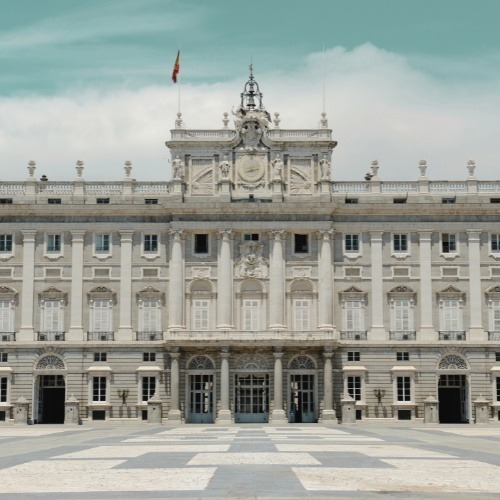
4. San Miguel Market: The best tapas
did you know that Lope de Vega was baptised here?
Well, actually it’s not exactly like that… In the past, in the same place where the market stands, there used to be a church, the Iglesia Parroquial de San Miguel de los Octoes. In 1809 this was demolished and replaced by a small square where the market was built. This is how the market was born, an open-air space specialised in fish. It was between 1913 and 1916 that the closed market was built, inspired by European iron markets such as Las Halles in Paris.
Today, with its wrought-iron structure and lively atmosphere, the Mercado de San Miguel is a must over the things to do in Madrid to sample the best of Spanish cuisine and experience the city’s vibrant culinary culture.
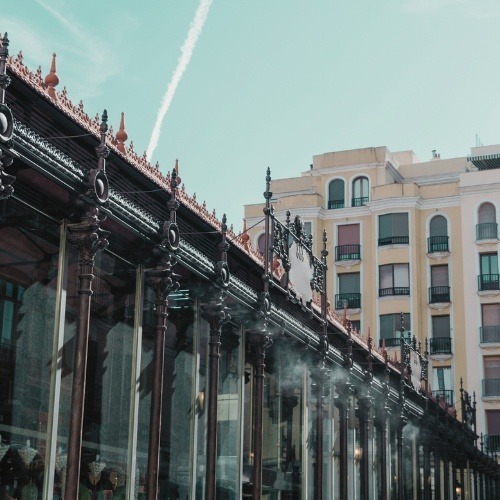
5. Temple of Debod: An Egyptian Gift
Located in Madrid’s Parque del Oeste, this is an ancient Egyptian temple dating back to the 2nd century BC, donated by Egypt to Spain in 1968 as a thank you for its help in saving the temples of Nubia.
After being carefully dismantled and moved, it was inaugurated in Madrid in 1972, maintaining its original east-west orientation.
The temple offers breathtaking panoramic views of the city, especially at sunset, but at night… it lights up offering a light show for your eyes!
Are you going to miss this essential among the things to do in Madrid?
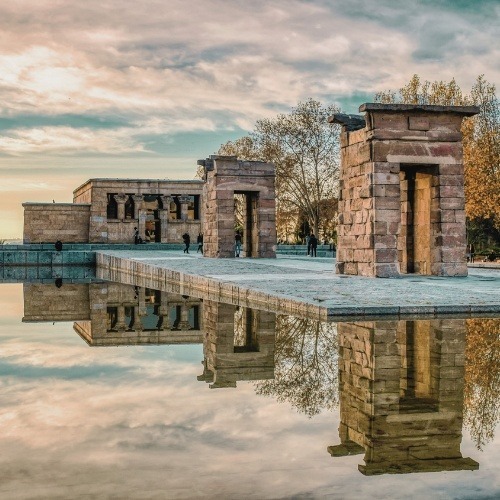
6. Plaza de la Villa: Historic Imposing
The square is home to 3 important buildings, key ponts in the things to do in Madrid:
- Casa y Torre de Lujanes: of Gothic-Mudejar style from the 15th century, the building is known for temporarily housing King Francis I of France as a prisoner.
- Casa de Cisneros: this 16th century Renaissance building was a historic residence connected to the Casa de la Villa by an elevated passageway.
- Casa de la Villa: formerly Madrid’s town hall, today it houses municipal offices and is used for institutional events and official ceremonies.
- Statue of Álvaro Bazán: dedicated to the Spanish admiral Don Álvaro de Bazán, it is a work by the sculptor Mariano Benlliure.
Why so many houses, you may ask? The square was born as an important administrative and residential centre in medieval Madrid, housing influential families and becoming the political and social centre of the city. Its location, between two of the most important entrances to the city, the Guadalajara Gate and the Vega Gate, made this space one of the most important in medieval Madrid.
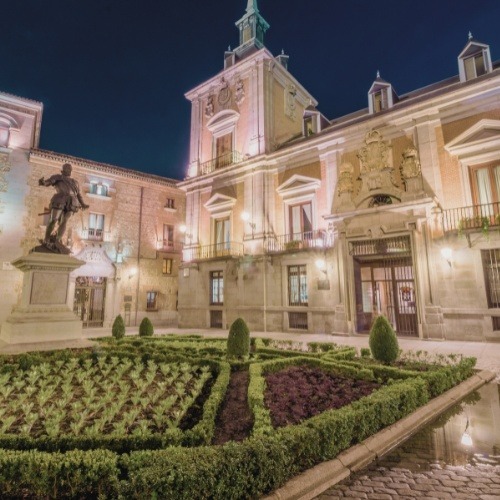
📲 Do you want to keep searching the internet or start your adventure now?
⏰With the DareMapp app, you won’t waste a single minute: YOUR VISIT TO MADRID ALREADY ORGANIZED AND AT YOUR OWN PACE.
7. El Retiro: A royal park
The Retiro Park is one of the largest and most emblematic parks in Madrid, covering more than 125 hectares in the heart of the city.
Inaugurated in the 17th century as a royal retreat for the family of Philip IV, today it is a green oasis, a basic visit over the things to do in Madrid for locals and tourists alike
The park is home to numerous gardens, ponds and monuments, such as the majestic Palacio de Cristal and the Estanque Grande, where you can take a boat ride. It also offers cultural activities, recreational areas and a rich diversity of flora and fauna, making it the perfect place to enjoy nature and leisure in the heart of the city.
Curiosity: the oldest tree in the park. It is called “El Abuelo”, and it is an ahuehuete planted around 1637.
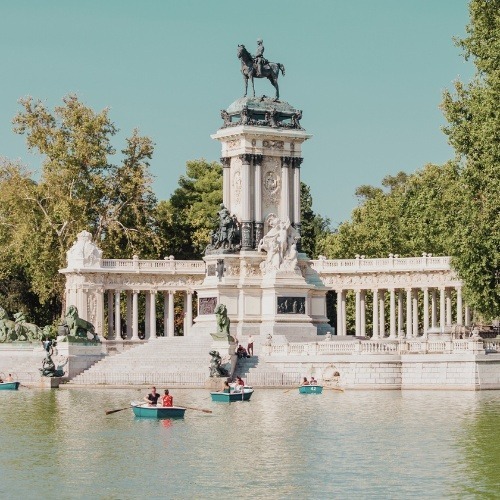
8. Prado Museum: Art and culture
Located on the Paseo del Prado in Madrid, the Museo Nacional del Prado is one of the most important and prestigious art galleries in the world. A visit among the things to do in Madrid you can´t miss.
The building was inaugurated in 1819 and houses a vast collection of masterpieces of European painting from the 12th to the 19th century.
Its treasures include paintings by artists such as Velázquez, Goya, Bosch, Rubens and Titian. The museum is famous not only for its extraordinary art collection, but also for its imposing neoclassical architecture, designed by Juan de Villanueva.
Check your tickets here.
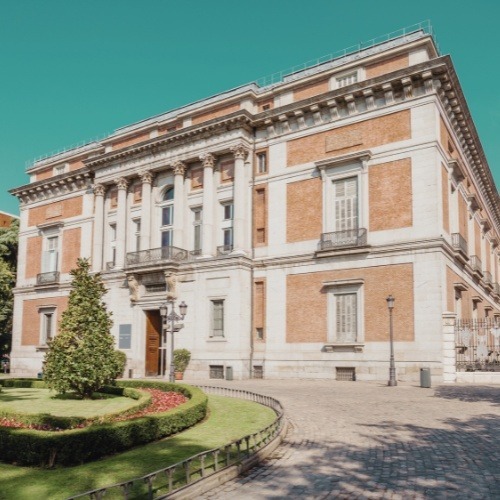
🚀 You already know the essentials… now it’s time to explore them.
With the DareMapp app, have the guide to Madrid on your phone, with no schedules or groups.
🗺️ Your route through Madrid, with DareMapp
📍Over 65 points of interest
🚀An organized route to optimize time
💡Recommendations, excursions & unique experiences
❓Quizzes, tests, and over 4 hours of narrated content

Tips to travel with peace of mind
When everything is ready — flights, hotel, itinerary — there are only two more things you need to travel worry-free: a good internet connection and reliable travel insurance.
✔ Get an international eSIM already set up on your phone. No need to change your SIM card, search for Wi-Fi, or pay for roaming. Activate it before your trip and enjoy unlimited data from the very first minute, wherever you are.
✔ Take out travel insurance that includes medical assistance 24/7, coverage for cancellations, theft, and — most importantly — advance payment of all medical expenses without you having to pay, wherever you are. Because in a new country, what matters most is feeling safe. Moreover, DareMapp offers you a 5% discount.
Both services can be arranged online in less than 5 minutes, with no paperwork required.
Don’t leave it to the last minute!
👉 Activate your Holafly eSIM at the best price here.
👉 Take out your travel insurance with IATI and get a 5% discount.
Other Things to do in Madrid:
Thyssen-Bornemisza Museum: Travel through the history of Western painting from the 13th to the 20th century with nearly a thousand works in its permanent collection.
Wax Museum of Madrid: Discover more than 450 wax figures of historical figures, sports icons, and celebrities in this museum located next to Plaza de Colón.
Santiago Bernabéu Stadium: Experience the Bernabéu Tour with direct access to the stadium, panoramic views, and a visit to the interactive museum and temporary exhibitions about the history of Real Madrid.
Parque Warner Madrid: Enjoy a theme park full of rides, shows, and Warner Bros characters, divided into five themed zones for the whole family.
Monastery of El Escorial: Explore this iconic monastery with an official audio guide that includes videos, historical images, and 360º tours for a complete visit.
Royal Palace of Aranjuez: Visit this majestic royal residence, part of the Aranjuez Cultural Landscape declared a UNESCO World Heritage Site, and walk through its gardens and royal chambers.
Faunia: Discover this nature-themed park that combines a zoo and a botanical garden, home to more than 3,000 animals from various ecosystems and climates.
Puy du Fou España: Just outside Madrid, in Toledo, immerse yourself in a unique theme park that takes you on a journey through the history of Spain with grand shows, historic villages, and natural landscapes. You can also enjoy ‘El Sueño de Toledo‘, a nighttime spectacular that spans 1,500 years of history with more than 200 actors on stage and breathtaking special effects.
— We’ve also included a link for those interested in accessing seven of Toledo’s most iconic monuments — such as the Mosque of Cristo de la Luz and the Synagogue of Santa María la Blanca — with a tourist bracelet valid for one week to visit them all.
Get your free Madrid tour! Download the DareMapp app and use the code MADRIDFREE (available until December 31, 2025)
It is important to know what things to do in Madrid, but also what to eat. Here are some typical dishes not to be missed:
Things to do in madrid: Top dishes
Madrid stew

Cocido madrileño, which originated in the 19th century as a humble stew for less well-off families, has reached a majestic status, being appreciated by kings such as Carlos I and Felipe II, who popularised it in the best restaurants in Madrid.
Nowadays, it is common for Madrid restaurants and homes to offer it on a weekly basis, especially on Saturdays, establishing itself as an essential dish on the family menu.
Patatas Bravas

This dish was invented in Madrid around 1960 in the Casa Pellico and La Casona establishments. Although it is possible that the recipe is older and comes from the more popular classes. However, the term “bravas” appeared with these bars.
Although there are many variations, patatas bravas are officially served with hot sauce.
what sauce do you like them with?
Don’t miss these things to do in Madrid.
Tripe
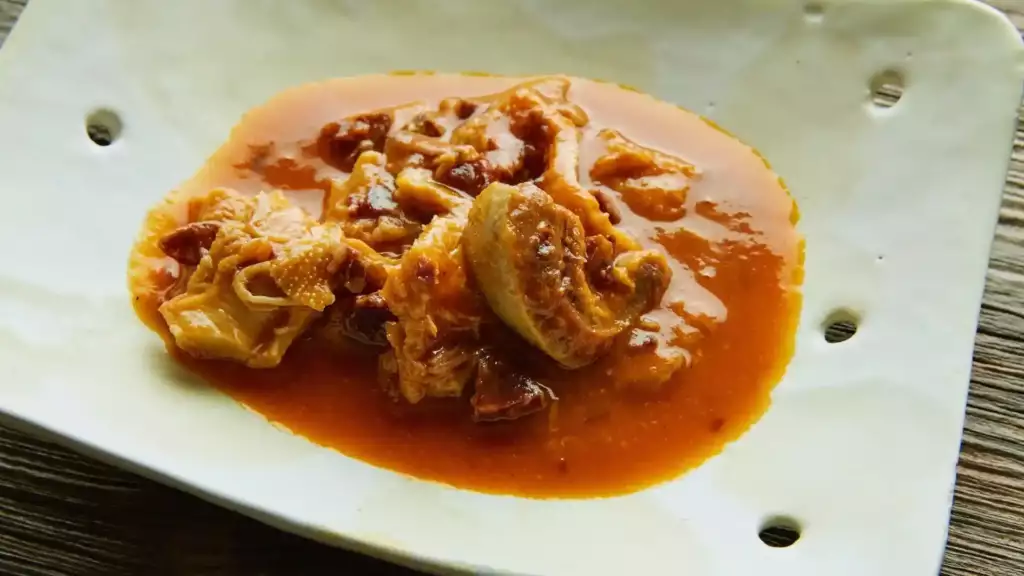
Callos a la madrileña is a traditional Madrid dish, for the bravest. Made with beef tripe cooked in a rich tomato sauce, paprika, chorizo and black pudding, it is one of the greatest delicacies of the national homemade gastronomy.
This hearty and tasty stew is especially popular in the winter months. It is usually served as a tapa or main dish in bars and restaurants.
Churros
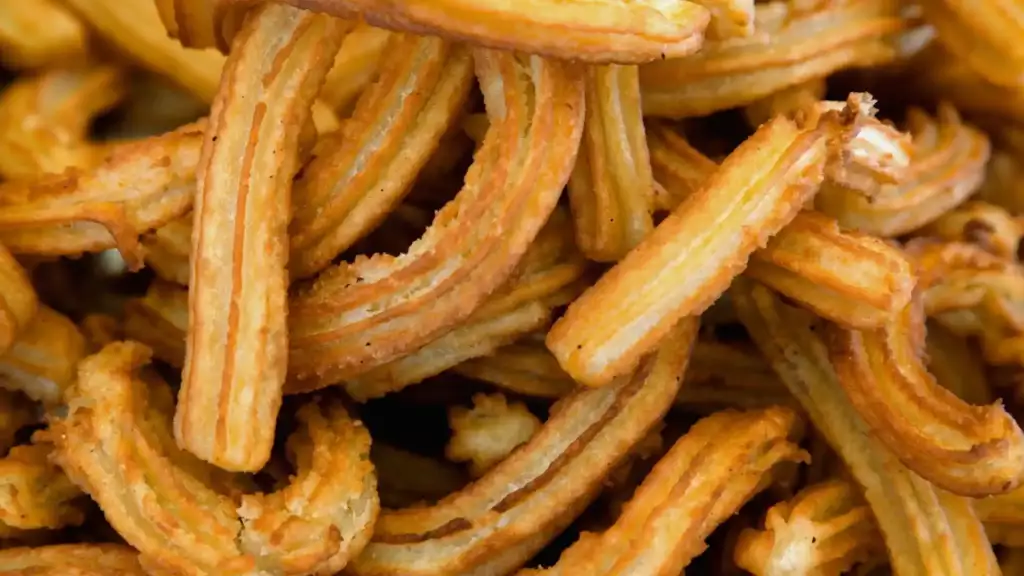
The origin of churros is uncertain, with theories attributing them both to China, where the Portuguese introduced the salty Youtiao recipe, and to Spanish nomadic shepherds, who created an easy-to-cook dough in the mountains.
Did you know that salted churros exist? In other countries, such as Uruguay and China, churros are eaten salted, sometimes filled with cheese.
In Spain, churros owe their name to the “Navajo Churro” breed of sheep, because of the similarity of their shape to the horns of these animals.
Today this crunchy sweet is served in thousands of churrerías around the country, a sweet treat to eat, one of the deliccius things to do in Madrid!
🤤Is your mouth watering already? Don’t worry, we feel the same. That’s why we make it easy with the best gastronomic stops in Madrid, selected for you to enjoy without wasting time.
Say goodbye 👋🏻 to endless scrolling and start truly savoring Madrid.
And if you have a car and want to discover other things to do in Madrid outside the city, we recommend these nearby places:
Things to do in Madrid: 3 Places you can’t miss
San Lorenzo El Escorial
Located about 50 kilometres northwest of Madrid, in the Sierra de Guadarram, this municipality is famous for housing the Royal Monastery of San Lorenzo de El Escorial. This town is a must for those wondering what things to do in Madrid, offering a rich combination of history, culture and natural beauty. Check your tickets here.
Alcalá de Henares
Alcalá de Henares is a historic university town and the birthplace of Miguel de Cervantes.
Located 35 kilometres northeast of Madrid, it is a UNESCO World Heritage Site. In addition, you can visit iconic buildings such as; the University of Alcalá; the Cathedral-Magistral; the Plaza de Cervantes; and the Corral de Comedias.
With direct buses from Madrid, Alcalá de Henares offers a fascinating journey through Spanish history, literature and architecture. A must-do over the things to do in Madrid.
Aranjuez
Located some 50 kilometres south of Madrid, Aranjuez is known for its majestic Royal Palace and extensive gardens, a UNESCO World Heritage Site.
The Royal Palace, built in the 16th century, stands out for its elegant architecture and luxurious interiors. One of the highly recommended things to do in Madrid. Check your tickets here.
On the other hand, its gardens; the Aranjuez Gardens; the Prince’s Garden; and the Island Garden, are famous for their beautiful landscaping and ornamental design.
In addition, the city is also home to the Museum of Royal Falúas, with an impressive collection of vessels used by royalty.
Undoubtedly a town that stands out as a historical enclave to visit in Madrid.
Extra: with kids
Looking for things to do in Madrid with the little ones? From thrilling rides to interactive museums, the city is full of family-friendly adventures.
🎢 Warner Bros Park
One of the best things to do in Madrid with kids is visiting Parque Warner Bros. This amusement park offers roller coasters, water rides, and live shows featuring Looney Tunes and DC Comics characters. A perfect mix of excitement and entertainment! Check your tickets here.
🕵️ Wax Museum
For a fun and educational stop, the Museo de Cera is a must. Kids can snap selfies with wax figures of Spider-Man, Harry Potter, or historical icons. There are also interactive experiences that make learning entertaining! Check your tickets here.
🖼️ Paseo del Arte Card
If your family enjoys culture, this pass gives access to Madrid’s top museums: Prado, Reina Sofía, and Thyssen-Bornemisza. They offer kid-friendly activities to make art fun and engaging. Check your tickets here.
Things to do in madrid: Legends and Curiosities
- The House of the Seven Chimneys: Parti Of The Historical Mysteries Things to do In Madrid
Right in the centre of Madrid, close to the bustling Gran Vía, is the enigmatic Casa de las Siete Chimeneas, a building full of legends that is a must-do part of the things to do in Madrid. Built in the 16th century, this house was, according to legend, home to a young woman named Elena, who was supposedly the secret lover of a Spanish monarch.
Legend has it that Elena died in mysterious circumstances, and her spirit still haunts the house, appearing in the windows on nights when the moon is full. In addition, some claim to have seen unexplained lights and heard wailing on the darkest of nights. This mystery makes the Casa de las Siete Chimeneas a place full of history and one of the mysterious things to do Madrid.
- The Ghost of Queen Barbara in the Palace of Linares: Spookies Things to do in Madrid
The Linares Palace, located in the emblematic Plaza de Cibeles, is not only a monument of great architectural beauty, but also a place shrouded in legends. It is said that the Marquis of Linares, one of its former owners, married a woman without knowing that she was his half-sister.
Upon discovering the truth, he ordered the death of his son, which triggered a series of tragic events. Since then, the ghost of Queen Barbara, the Marquis’s wife, is believed to wander the corridors of the palace, weeping for her lost son. This enigmatic tale has given the Palacio de Linares a sinister reputation, making it part of the fascinating things to do in Madrid especially for lovers of the paranormal.
- The Cibeles Fountain and its Secret Connection: One of the Enigmatics Things to do in Madrid
The Cibeles Fountain is one of Madrid’s most iconic landmarks, but few know of its mysterious connection to Freemasonry. Although it is best known for being the place where Real Madrid fans celebrate their victories, the fountain hides Masonic symbols in its design, making it one of the enigmatics things to do in Madrid.
The arrangement of the monuments in the Plaza de Cibeles, along with the orientation of the goddess Cibeles towards the Palacio de Buenavista, is said to have hidden meanings related to Masonic beliefs. This theory has been the subject of much speculation and adds a layer of mystery to this popular meeting point, making the Fuente de Cibeles part of the intriguing things to do in Madrid.
- The Legend of the Bear and the Strawberry Tree: An Essential Symbol to See in Madrid
The Bear and the Strawberry Tree, the quintessential symbol of Madrid, is much more than just a sculpture; it is a living legend to see in Madrid. The story behind this iconic statue dates back to the Middle Ages, when the city was surrounded by vast forests inhabited by bears and strawberry trees. According to legend, bears were so common that they came to be seen as the protectors of the city, while the strawberry tree symbolised the abundance of natural resources.
This union between the bear and the strawberry tree was adopted as the city’s coat of arms, and today, the statue located in Puerta del Sol is a popular landmark and a history-laden symbol of what to see in Madrid for those looking to learn more about the Spanish capital.
👁️ Still searching for information about Madrid?
With the DareMapp app, explore Madrid like never before: interactive tours, tips, and routes all in your mobile.
5. The Mystery of Puerta del Sol and Kilometre Zero: An Enigma to See in Madrid
Puerta del Sol is undoubtedly one of the most iconic places to see in Madrid, but few know about the enigmatic mystery surrounding Kilometre Zero, the point from which all of Spain’s radial roads are measured. According to an old urban legend, the Kilometre Zero plaque conceals a “special energy” capable of influencing those who stop on it. Some say that by stopping at this exact spot, one can recharge one’s vital energy, while others claim that it brings good luck to those who set out on a journey.
In addition, it is rumoured that underneath this plaque is a buried time capsule containing important objects and documents, destined to be revealed in the distant future. This mystery makes Kilometre Zero not only a landmark, but also a place full of symbolism and curiosity to see in Madrid if you are looking to uncover the city’s hidden secrets.
6. The King’s Shadow in the Monastery of San Lorenzo de El Escorial: A Supernatural Story to See in Madrid
On the outskirts of Madrid, in the imposing Monastery of San Lorenzo de El Escorial, a legend is told that has endured over the centuries, making it one of the most mysterious stories to see in Madrid. King Philip II, the monarch who ordered the construction of the monastery, is said to still wander its corridors after his death.
According to legend, the king’s spirit often appears in the area of the Pantheon of the Kings, where many of Spain’s monarchs are laid to rest. Visitors and monks have reported seeing the shadow of a hunched man, looking very similar to Philip II, praying or walking slowly through the dark corridors of the monastery. This supernatural tale has added an air of mystery and fascination to the Monastery of San Lorenzo de El Escorial, making it an intriguing place to see in Madrid, especially for those interested in the paranormal and historical accounts.
Get your free Madrid tour! Download the DareMapp app and use the code MADRIDFREE (available until December 31, 2025)
Remember that with DareMapp you can take a multitude of interactive guided tours. Fun sightseeing around the main destinations.
Click here to discover all our destinations.
What better way than travelling and discovering while learning in a fun way? Visit our blog to discover lots of tourism tips.
Visit our social networks and discover what to see in hundreds of cities



